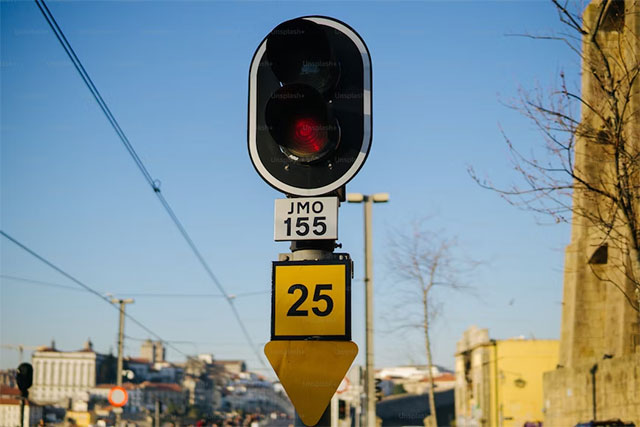With the constant growth of urbanization and the relentless increase in vehicular traffic, cities worldwide have been grappling with the challenge of managing congestion efficiently. In this era where time is a priceless commodity, finding innovative solutions to help tame the traffic beast has become imperative. This article aims to unravel smart traffic control systems – an emerging technology-driven approach that promises to revolutionize how we navigate our roads. By harnessing Artificial Intelligence (AI), the Internet of Things (IoT), and data analytics, these systems hold immense potential in minimizing traffic jams, enhancing safety measures, reducing emissions, and improving overall transportation efficiency. Join us as we delve into this cutting-edge solution that could shape the future of urban mobility as we know it.

The Evolution of Traffic Control – Introduction to Smart Traffic Control Systems
With the rapid urbanization and continuous rise in vehicular traffic, cities across the globe are facing the arduous task of managing congestion effectively. Finding innovative solutions to tame this escalating beast has become paramount in a world where time is invaluable. This article will delve into smart traffic control systems – an emerging technology-driven approach that promises to revolutionize our road navigation. By leveraging Artificial Intelligence (AI), the Internet of Things (IoT), and data analytics, these cutting-edge systems have tremendous potential.
Smart traffic control systems hope to curb traffic congestion by improving efficiency and reducing road delays. They employ advanced technologies like real-time data collection, intelligent algorithms, and predictive modeling to optimize transportation networks. These systems can intelligently adjust signal timings at intersections based on traffic conditions rather than rigid pre-programmed schedules.
Integrating AI within smart traffic control systems enables them to learn from historical data patterns and make informed decisions dynamically. By analyzing input from various sensors such as video cameras, radar detectors, or even smartphones equipped with location services, these systems can provide real-time insights for effective decision-making in managing trafficked areas.
In conclusion, this article explores how smart traffic control systems fueled by AI, IoT, and data analytics hold immense potential in tackling ever-growing road congestion efficiently. The advent of these cutting-edge technologies brings forth exciting possibilities for transforming how we navigate our cities’ streets while saving valuable time.
Key Considerations When Implementing Smart Traffic Control Systems
When implementing smart traffic control systems, several key considerations must be considered. Firstly, ensuring the system has accurate and reliable data inputs is crucial. This means having sensors and cameras to gather real-time information on traffic flow, road conditions, and vehicle movements. The system can effectively analyze and respond to changing traffic patterns with accurate data.
Secondly, interoperability is a critical consideration when implementing smart traffic control systems. As these systems rely on multiple technologies, such as AI and IoT devices, it is essential that different components of the system can seamlessly communicate with each other. Interoperability enables efficient coordination between system elements, like traffic lights, variable message signs (VMS), and centralized control centers.
Another important consideration is cybersecurity. Smart traffic control systems are connected to networks, making them vulnerable to cyber threats. Implementing robust security measures such as encryption protocols and firewalls is necessary to protect against cyber-attacks that may compromise the system’s integrity.
In conclusion, successful implementation of smart traffic control systems requires ensuring accurate data inputs for effective analysis, establishing interoperability between various system components for efficient coordination, and prioritizing cybersecurity measures to protect against potential threats. By addressing these key considerations, cities worldwide can harness this emerging technology-driven approach to revolutionize their transportation infrastructure and better manage road congestion.
Real-life Case Studies – The Impact of Smart Traffic Control Systems
Real-life case studies have demonstrated the significant impact of smart traffic control systems in improving urban traffic management. One notable example comes from Singapore, a city known for its efficient transportation system. The implementation of an intelligent transport network, which includes smart traffic control systems, has resulted in reduced travel times and improved road safety. By utilizing real-time data collected from sensors and cameras placed across the city’s roads, these systems can instantly detect congestion or accidents and adjust traffic signals accordingly to minimize delays.
Another case study is in Los Angeles, where smart traffic control systems have successfully addressed the long-standing issue of heavy traffic on freeways during peak hours. By dynamically adjusting speed limits based on real-time conditions and monitoring individual vehicles’ speeds using connected technologies like GPS trackers and vehicle-to-infrastructure communication, these systems have alleviated bottlenecks and enhanced overall traffic flow. This proactive approach saves commuters time and contributes towards reducing greenhouse gas emissions by minimizing stop-and-go driving patterns.
These exemplary cases reflect the effectiveness of smart traffic control systems in tackling congestion issues faced by cities worldwide. Using advanced technologies to analyze data allows authorities to make informed decisions that optimize road capacity utilization while prioritizing public safety. As this technology continues to evolve, it holds immense potential to create smarter cities with more efficient transportation networks that save time and resources for individuals and communities.













